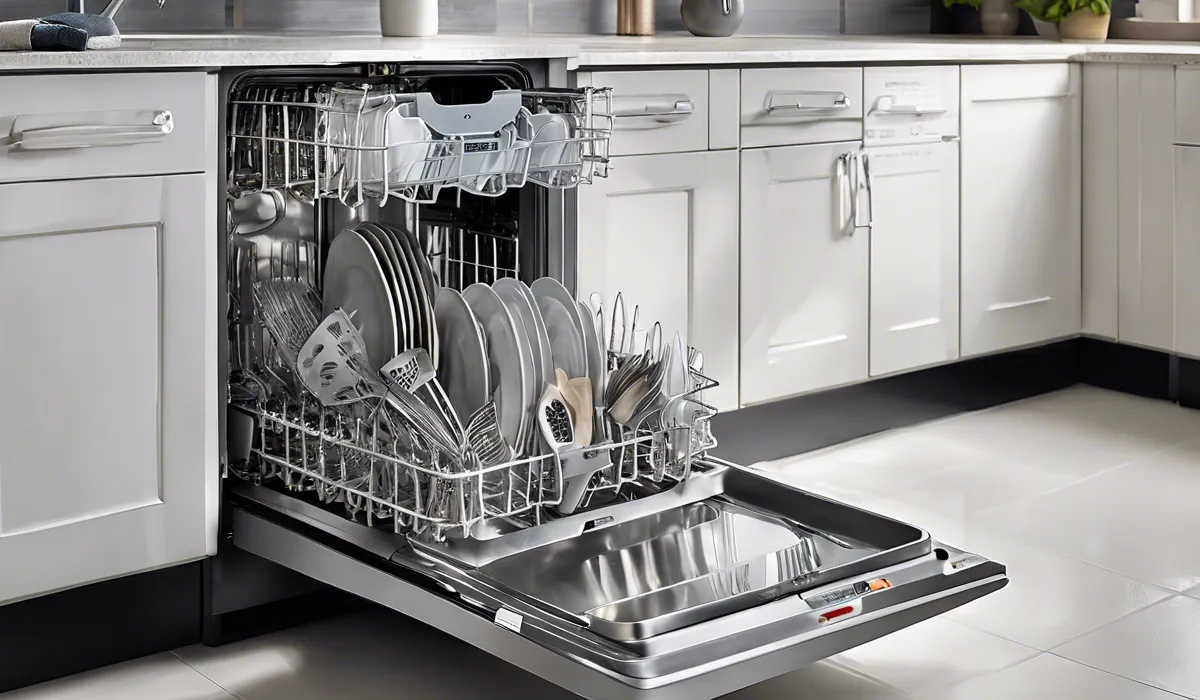How to Move a Dishwasher: Easy Steps & Safety Tips
To move a dishwasher, first, turn off the power and water supply. Disconnect hoses and the drain line. Secure the door and gently slide the dishwasher out. Carefully transport it to the new location, then reverse the process to install.
Preparation for the Move

Measuring is Key
Before you begin the process of moving a dishwasher, it is crucial to measure both the dishwasher and the new location where it will be installed.
This ensures that the appliance will fit seamlessly into its new spot without any unforeseen issues.
Measure the width, depth, and height, and compare these dimensions with the new location. Do not forget to account for any additional space needed for the hoses and electrical wiring.
Gathering Tools and Materials
To successfully move a dishwasher, you need to gather the right tools and materials.
This typically includes an adjustable wrench, screwdrivers, pliers, a towel, and a bucket. Make sure you have everything within reach before you start, as this will make the process smoother and prevent any unnecessary delays.
Turning Off Power and Water Supplies
For safety, turn off the power supply to the dishwasher at the circuit breaker. This prevents any risk of electric shock. Then, shut off the water supply to the appliance.
This is usually done via a valve located under the sink or in the basement. Confirm that the power and water are completely off before proceeding to the next steps.
Draining Water and Disconnecting Lines
Place a towel and a bucket underneath the dishwasher to catch any water as you drain it from the hoses and the appliance itself.
Disconnect the water inlet and drain lines, making sure to keep them upright to avoid spilling any residual water.
Disconnecting Electrical Wiring
Once the water is completely drained, proceed to disconnect the electrical wiring. Before doing this, double-check that the power supply is off.
Remove the kick plate at the bottom of the dishwasher to access the electrical connections, then disconnect them carefully.
Removing Securing Hardware
Dishwashers are often secured to the countertop or cabinetry. Use a screwdriver to remove any brackets or hardware that hold the dishwasher in place.
Keep all removed hardware in a safe place, as you will need these to secure the dishwasher at its new location.
Removing the Dishwasher

Protecting Your Floors
Before sliding the dishwasher out, protect the floor by laying down a protective covering. This could be cardboard or a drop cloth, which will prevent scratches and damage to the flooring.
Ensure the path from the dishwasher to the exit is clear of any obstacles that could hinder movement.
Disconnecting Water and Drain Lines
With the bucket still in place, disconnect the water supply line from the dishwasher using an adjustable wrench. Then, remove the drain line from its connection. Be cautious as there might still be some water in the lines.
Sliding Out The Dishwasher
Carefully slide the dishwasher out from under the counter. It is important to pull it straight out to avoid bending or damaging the water and electrical connections that are still attached to the back.
Take it slow, and if the dishwasher is particularly heavy or large, seek assistance.
Lifting and Carrying Techniques
When lifting the dishwasher, keep your back straight and lift with your legs to avoid injury.
Use a hand truck or dolly if available, especially if you need to transport the dishwasher over a long distance or if it is particularly heavy.
Always have someone help you to guide the appliance and ensure a safe move.
Installing the Dishwasher at the New Location

Preparing the New Space
Before installing the dishwasher in its new location, make sure the space is clean and free of debris. Check that the floor is level, as an uneven surface can cause operational issues. If necessary, use shims to create a level base for the dishwasher.
Ready the Connections
Ensure the plumbing and electrical connections in the new location are compatible with your dishwasher.
This means checking that the water supply valve and electrical outlet are in good working condition and within reach of the dishwasher’s hoses and power cord.
Adjusting Leveling Feet
Before sliding the dishwasher into place, adjust its leveling feet. This is crucial to ensure that the dishwasher is stable and can drain properly. Use a wrench to adjust the feet until the appliance is perfectly level from front to back and side to side.
Sliding the Dishwasher into Place
Carefully slide the dishwasher into its new location, making sure not to pinch or kink any of the hoses or wiring. Once in place, leave enough room to connect the water supply, drain line, and electrical wiring before pushing it all the way back.
Connecting Water and Drain Lines
Reconnect the water supply line to the dishwasher, ensuring it is tightly secured to prevent leaks.
Then, attach the drain line to the drain connection. These connections are vital to the proper operation of the dishwasher, so double-check them for security.
Reconnecting Electrical Wiring
Reattach the electrical wiring, following the instructions and diagrams provided by the manufacturer. Ensure that all connections are secure and that the wiring is not at risk of being pinched or damaged when the dishwasher is fully installed.
Securing the Dishwasher
Once all connections have been made, push the dishwasher back into its final position. Use the previously removed hardware to secure the dishwasher to the countertop or cabinetry, ensuring that it does not shift or move during use.
Testing for Proper Operation
After installation, run a test cycle on the dishwasher to ensure everything is working correctly.
Check for any leaks or unusual noises and confirm that the dishwasher drains properly. If everything checks out, you have successfully moved and installed your dishwasher!
FAQs About Moving a Dishwasher
How do I safely turn off the power and water supply before moving a dishwasher?
To safely turn off the power, switch off the circuit breaker or unplug the dishwasher. For the water supply, turn the valve under the sink or the main water supply valve to the off position.
What is the proper way to disconnect hoses and the drain line from a dishwasher?
Place a towel or shallow pan under the connection points to catch any residual water, then unscrew the hoses and drain line using pliers or a wrench, if necessary.
How can I ensure the dishwasher door stays secure while moving it?
Use tape or a strap to secure the dishwasher door closed during the move to prevent it from swinging open.
What is the best method for sliding out a dishwasher without damaging the floor?
Place a piece of cardboard or a towel under the legs or base of the dishwasher and gently slide it out to protect the floor from scratches.
How do I reinstall the dishwasher at a new location?
Reverse the removal process: slide the dishwasher into place, connect the drain line and hoses, turn on the water supply, and restore the power. Ensure it is level before securing it to the cabinetry or walls.
Final Thoughts
Moving a dishwasher requires careful preparation: shutting off power and water, disconnecting hoses and the drain line, and securing the door.
Once these steps are completed, the dishwasher can be safely slid out. When transporting, handle with caution to avoid damage. Reinstallation involves reversing the removal process.






